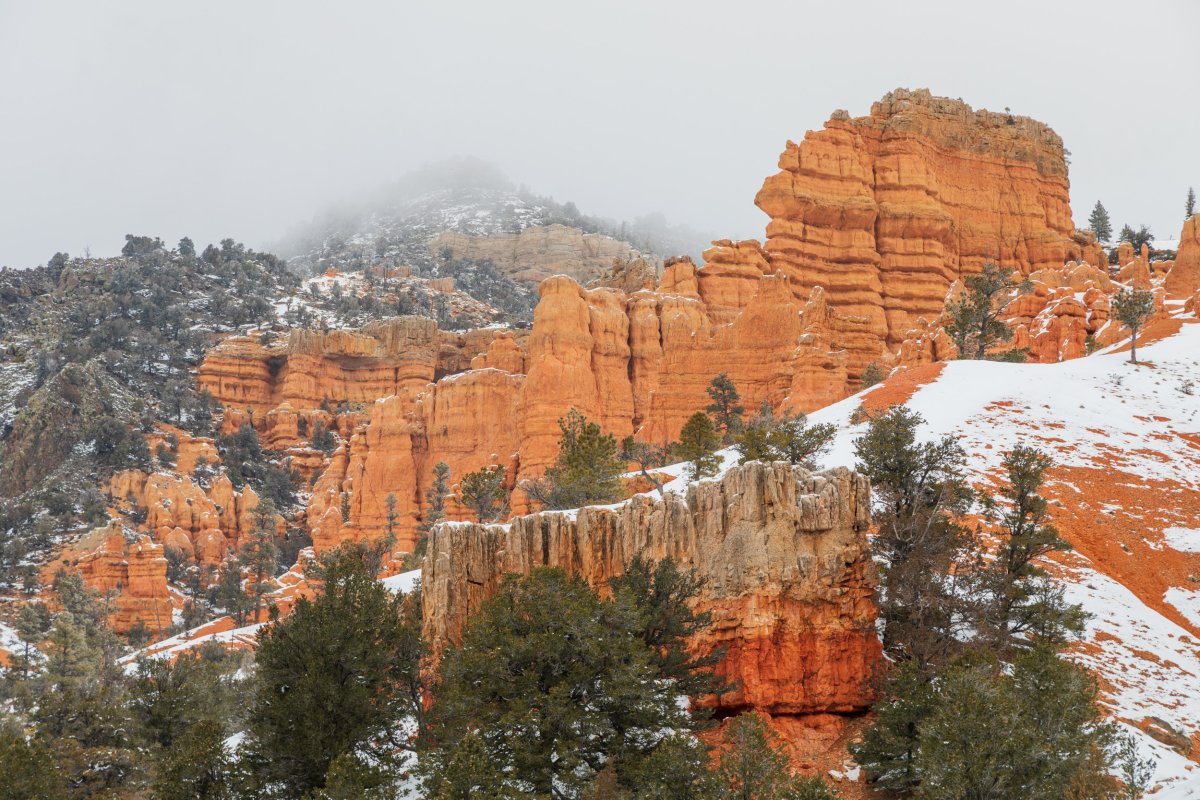The outlook is good for Utah's water supply, with the state's snowpack and reservoir levels well above average for this time of year.
As of late February, Utah's snowpack levels were "above normal" for most regions, the Utah Division of Water Resources said. By March 12, most areas were seeing a snowpack between 110 percent to 129 percent of average, while the Bear and Lower Sevier regions were above this, at between 130 to 149 percent.
"Our statewide snowpack has been consistently above normal since the beginning of February, which has really put Utah in a good position as we head into spring," Candice Hasenyager, director of the Division of Water Resources, said in a statement.
The state's reservoirs are currently at 83 percent, which is 22 percent higher than usual, the Utah Division of Water Resources said in an update. This also provides a "drastic contrast" to last year when they were only "around half full."
"These figures reaffirm the importance of our water storage and infrastructure. Thank you for continued mindfulness when it comes to water use," the division wrote.
The snowpack levels and water supply are not going to break records like they did last year, but it is still a positive outlook for the state.
Last year, intense winter storms meant that snowpack levels around the West were much higher than average. This was a much needed break to the drought conditions the region had been experiencing before these winter storms hit.

The West saw some more winter storms at the beginning of this year, however not nearly on the same scale. It does however provide hope that water supply is plentiful.
The water supply currently stored in the mountains will help to fill important Utah reservoirs such as Lake Powell, which is the second largest man-made lake in the U.S. The reservoir lies on the border between Utah and Arizona, on the Colorado River.
In recent years, the lake has reached record low levels. This was concerning to water officials as it stores water not just for those living in the Colorado River basin, but it also produces hydro power through the Glen Canyon Dam.
Currently however, the lake is at 3,560.99 feet. This is a drastic improvement from the levels it was at the same point last year, of 3,520 feet.
The Division of Water Resources reported last month that some areas of the state broke snowfall records due to the wet weather.
"Deer Valley Resort reported today that they've broken the February snowfall record with 125.5 inches! This is their wettest February on record. That's great news for our state's water resources," the division said in an update posted on February 28.
The division shares maps of the snow water equivalent in the state every week, to keep residents updated on the water supply in the state.
Do you have a tip on a science story that Newsweek should be covering? Do you have a question about snowpack? Let us know via science@newsweek.com.
Uncommon Knowledge
Newsweek is committed to challenging conventional wisdom and finding connections in the search for common ground.
Newsweek is committed to challenging conventional wisdom and finding connections in the search for common ground.
About the writer
Robyn White is a Newsweek Nature Reporter based in London, UK. Her focus is reporting on wildlife, science and the ... Read more
To read how Newsweek uses AI as a newsroom tool, Click here.






